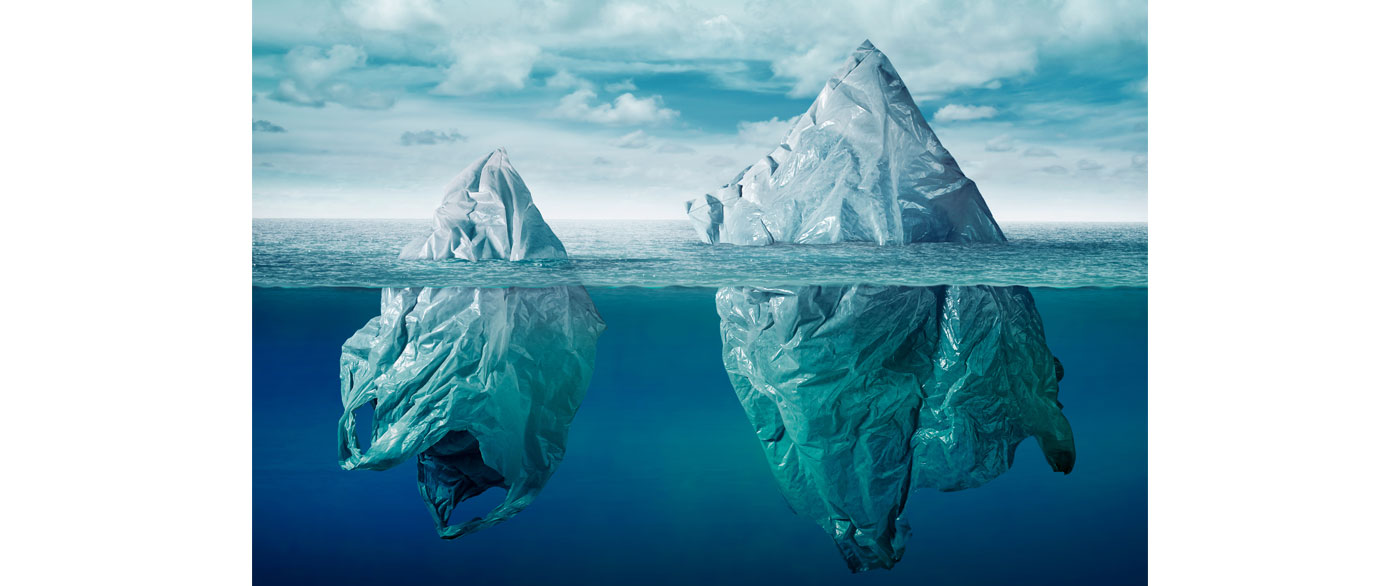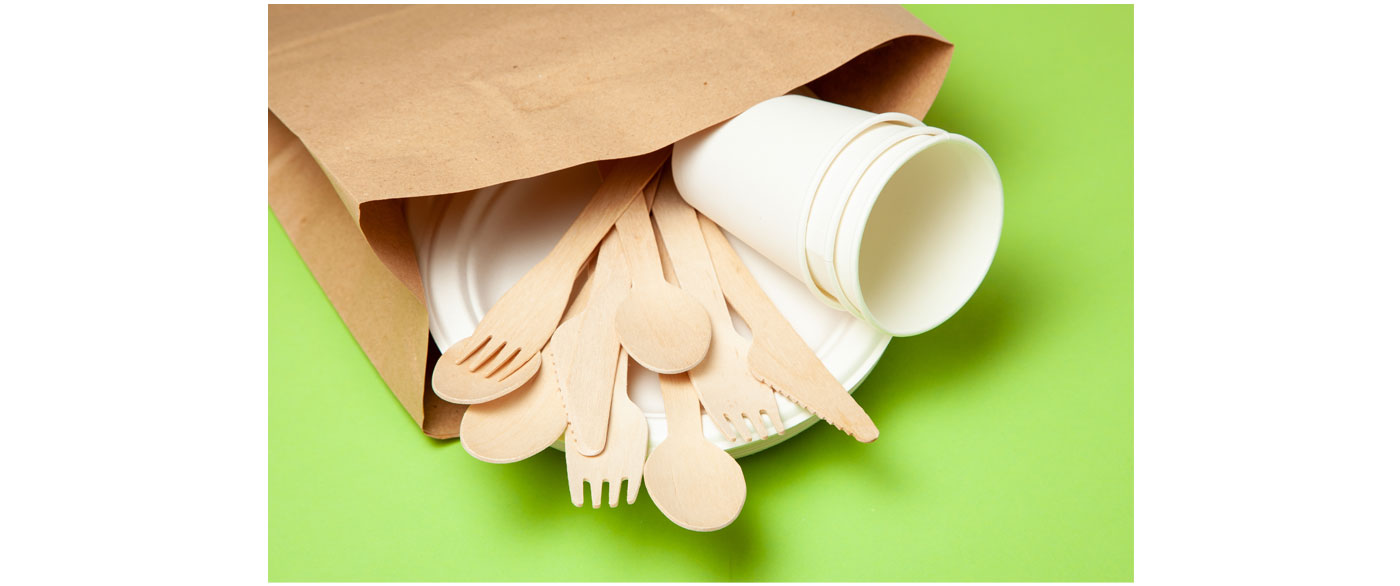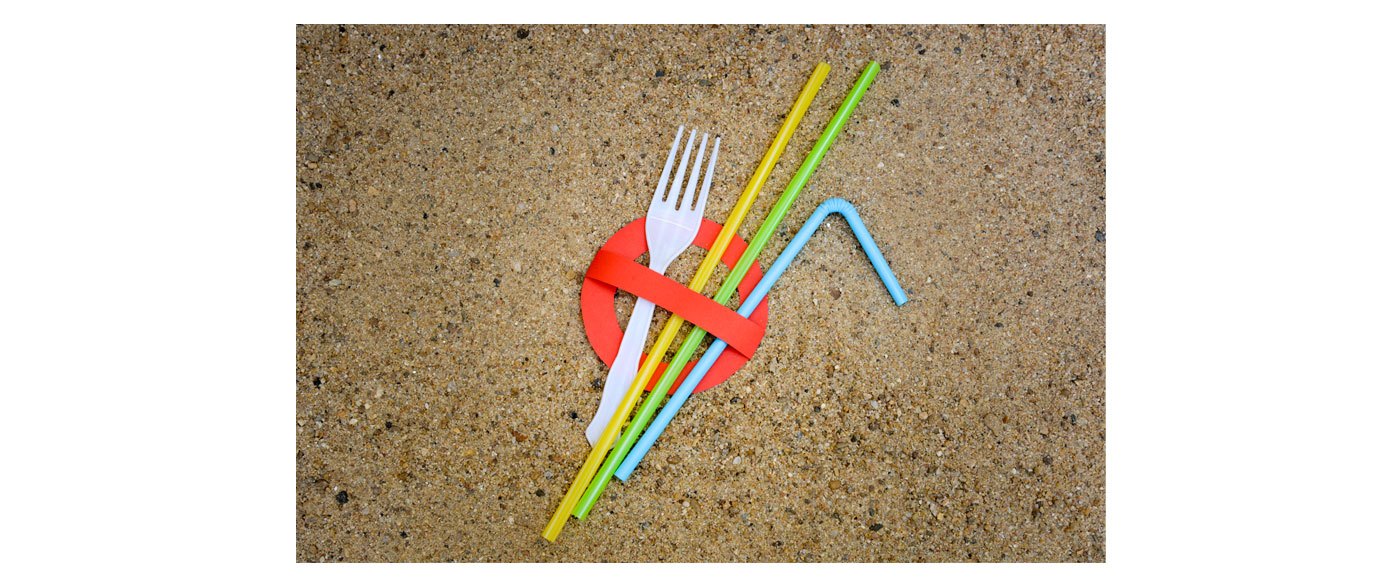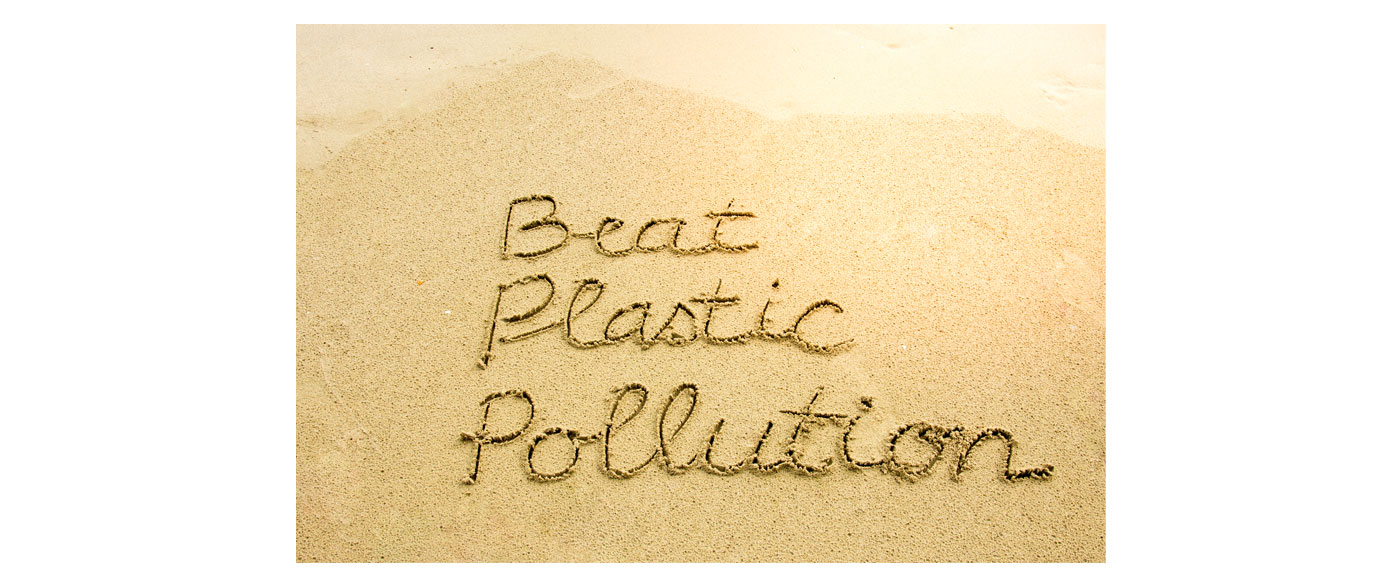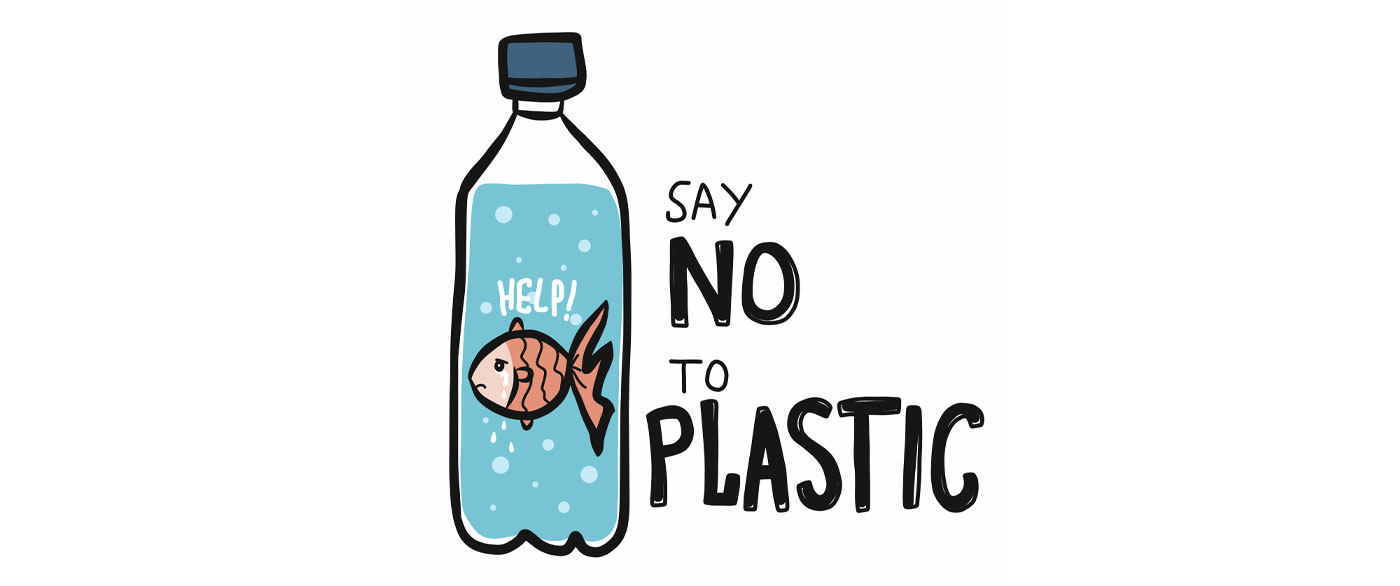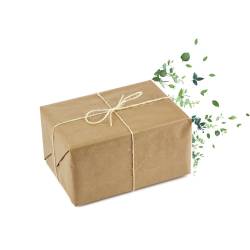Your plastic-free venue!
If you want to make your venue completely plastic-free but don't know where to start and what products to choose, you can start by taking a look at our proposal for biodegradable catering solutions and begin to understand why to choose one product over another and why.
What does biodegradable mean?
Biodegradable: what does it mean? Biodegradable materials are defined as such when they eventually dissolve into their constituent chemical elements through the action of biological agents such as bacteria, plants, animals and other physical components including the sun and water under natural environmental conditions. In doing so, these biodegradable substances are transformed into soil nutrients, carbon dioxide, water and biomass.
Simply put, it is the metabolic conversion of biodegradable material into carbon dioxide.
Biodegradable substance: how is biodegradability measured?
With the standard EN 14046 test, also known as ISO 14855.
If the material biodegrades 90% in less than 6 months then it has passed the test for all intents and purposes.
All materials are degradable, but the determining factor is the SPEED with which the biodegradation process takes place.
What does the degradation time of different materials depend on?
- On the conditions of their exposure,
- by the characteristics of the material itself such as molecular size, mixtures, additives, functional groups or flexibility.
Here are some examples of biodegradability:
- Paper handkerchiefs: 1 to 12 months;
- Rope: 3 to 14 months;
- Wood: 1 to 3 years;
- Glass bottles: about 4,000 years;
- Iron: 1 to several million years depending on the type of iron;
- Polystyrene: 450 to 1000 years.
>>> Read RGLife in-depth article: Single-use plastic products: updates on the 2021 European regolations.
What does 'compostable' mean?
A material is defined as compostable if it can be a type of material that can be degraded by the action of organisms, and thus biologically, producing carbon dioxide, water, inorganic compounds and biomass (compost) over a controlled period of time and under certain conditions.
How are the criteria for compostability defined?
The European standard EN 13432 defines the characteristics that a material must possess in order to be defined as compostable in an industrial composting facility. This applies to all its components, inks and additives.
How is compostability measured?
With the standard EN 14045 test, which certifies its disintegrability.
During the test, the material to be tested is composted with the other materials for 3 months, at the end of which the resulting compost is analyzed with a deviation of 2 mm.
To pass the test, the residues of the tested material that exceed 2 mm in size must have a mass of less than 10 percent of the initial mass.
In addition to this, many other parameters are checked, calculated by additional tests, such as OECD 208.
What is the difference between industrial and home composting?
Home composting is a more complicated and slower-paced process than that carried out in an industrial facility, since the temperature in the garden compost is lower and less constant.
In both industrial and home versions, composting is a highly recommended alternative to avoid disposing of waste in landfills or resorting to incinerators, which are very expensive and polluting.
What is the difference between biodegradable and compostable?
Both processes constitute a degradation of matter to the point of breaking it down into their chemical compositional elements.
While biodegradation is a natural process in which the rate of degradation depends on many factors, the composting process is a more controlled process, in an environment where operating conditions accelerate degradation to the point of obtaining organic manure.
Thus, we can say that biodegradation is a slow process carried out by nature, while composting is a fast process carried out by man.
The difference between the definitions lies in two parameters:
- Degradation times,
- Residues at the end of industrial composting.
Biodegradable, meaning: to be defined as biodegradable, the directive states that the product must decompose 90% within 6 months. On the other hand, to be defined as compostable, for example, compostable plastic can be defined as such, it must disintegrate in less than 3 months and no longer be visible.
Then there is a third parameter, which is ''rapidrapid biodegradability'. The OECD (Organization for Economic Cooperation and Development) has developed guiding parameters for establishing biodegradability: the OECD 301 method. A substance with rapid biodegradability successfully passes the OECD test if it demonstrates more than 60 percent biodegradability in 28 days.
It is good to remember that: compostable is always biodegradable, biodegradable is not always compostable.
Biodegradable not compostable then is a perfectly possible definition, just as there can be, for example, a biodegradable and compostable plastic.
What does renewable mean?
A renewable resource can be renewed in a relatively short period of time, according to the human time scale, such as bamboo, which reaches full maturity within 6-7 years. Thus, renewable products regenerate quickly relative to their consumption.
What is upcycling?
It is the upcycling of materials or products that are no longer used, so that they can be transformed into other materials or products of higher quality and/or utility.
What does bio-supply mean?
It is the process by which non-food industrial products are made from renewable materials from biomass.
Such products help reduce our dependence on fossil materials and lessen the environmental and health impacts of some common consumer goods.
What is the difference between biodegradation and biosupply?
In short, the former takes into account the end of a product's life, the latter looks at the origin of materials.
It is good to remember, however, that a bio-sourced product is NOT necessarily a biodegradable product, as although it is composed of plant substances, it may contain components that are NOT biodegradable.
What is the difference between a recycled product and a biodegradable product?
A recycled product is a product made totally or partially of residue, that is, materials that were previously used.
Glass, paper and wood are the most common recycled materials, since with relatively easy processes we can regain the raw material to create new products.
A recyclable product is one that issuitable for recycling, that is, it can undergo further processing for the purpose of obtaining raw material for reuse.
Themajority of materials used on a large scale are recyclable.
Are paper and cardboard compostable?
Not all types of paper and cardboard are compostable.
The great virtue of paper and cardboard is that they are both 100% recyclable up to 10 times. In addition, they are both biodegradable: they take 1 to 12 months to disintegrate, depending on their composition.
Because of these characteristics, paper and cardboard are materials with a low environmental impact.
What are biomaterials?
They are materials from grain products and by-products-for example, starch-but also from fibrous plants, such as cellulose.
What is bagasse? How is it different from cellulose pulp?
Bagasse - or bagasse - is a product derived from sugarcane waste, while cellulose pulp is made from the fibers left over from the processing of certain plants, especially bamboo.
This is the only real difference between the two materials, both of which are compostable. To be so, these products must comply with EN 13432 and thus be free of chemicals.
What are pla and cpla?
PLA is a bioplastic that is made from 100% natural resources such as corn starch, sugar cane or cassava, so it is derived from renewable resources.
It was created as an alternative to polyethylene, which is instead a petroleum derivative.
According to EN 13432, PLA is fully biodegradable and compostable, but not everyone believes that PLA will pass the new law that will take effect starting in 2021.
CPLA is crystallized PLA and therefore has greater heat resistance and hardness, which generally allows the product to withstand temperatures up to 80°C.
What is mater-bi?
Mainly used to make wet-bags, mater-bi is a new family of bio-plastics that uses plant components such as cornstarch and biodegradable polymers made from both renewable and fossil-based raw materials.
Other materials
Birch wood
Mainly recommended for making cutlery because it does not create splinters and is sturdy for any food choice.
Palm leaf
Mainly used for plates and trays.
Processed palm leaf is derived from the 'spontaneous fall' of BETEL palm leaves(natural detachment of the leaf from the plant in its normal renewal cycle), not only for greater environmental friendliness but also because, given the high moisture content of green leaves that would immediately mold, dried leaves are the best alternative.
Processing involves an initial stage of water jet washing and forming by pressing at high temperature.
Two to three plates are made from each leaf, depending on the different formats.
The remarkable advantage of these products is that they are waterproof and grease-proof in a completely natural way, without the need for additional coatings and additives.
Since each palm leaf has elegant and unrepeatable veins, each product made from this raw material constitutes a unique piece.
What are the most well-known certifications that disposable materials can obtain?
- ECOLABEL AND NORDIC ECOLABEL: certification that guarantees compliance with selective and transparent criteria about the environmental behavior of products during their life cycle, from the extraction of raw materials to their recycling. Otherwise known as SWAN - White Swan - this is a very strict label that incorporates the criteria of the European eco-label, but going so far as to include those concerning organic products. Evolving in nature, this label continually takes into account the emergence of new problems and the adoption of new solutions, so much so that it issues approvals for a duration of 3 to 5 years maximum. It is a mark of quality, not quantity, established in 1992, which considers 8 major families of requirements:
- Energy consumption,
- Water consumption,
- Climate aspects,
- Origin of raw materials,
- Hazardous effluents,
- Packaging,
- Waste management,
- Use of chemicals.
- SEEDLING (COMPOSTABLE): certification that guarantees product compostability, preferring materials that meet biodegradability requirements and flexographic printing with OK COMPOST compostable inks.
- OK COMPOST: is the guarantee that products are biodegradable in the industrial composting plant.
- 100% RECYCLED: environmentally friendly products made with 100% recycled paper and compostable inks.
- FSC (Forest Stewardship Council) and PEFC: two certifications that guarantee that paper and cardboard come from responsibly and sustainably managed forests. FSC is a democratically organized international association based on principles of participation and fairness. FSC wood contributes to the fight against forest decay and deforestation, taking into account the conservation of biodiversity, the protection of indigenous peoples' rights and the renewal of resources.
What is the ISO14001 standard?
It is a standard applied to environmental management systems to address consumers' environmental concerns. This standard sets standards for an effective and environmentally friendly company management system.
What will the legislation that will take effect from January 1, 2021 prohibit?
Our personal opinion is: too few disposable products.
The strangest thing about the whole plastic free operation, undertaken by the European Union, is that virtually all plastic cups - of which northern European companies are the largest producers - will still be allowed, while tableware, plates and cutlery, mainly used in Spain, but even more so in Italy, will be banned. Indeed, our country is Europe's largest producer and consumer of these products.
What products will be banned?
The directive will ban the following plastic products:
- Cutlery and plates,
- Straws,
- Inflatable balloon sticks,
- Stirrers (paddles for mixing cocktails),
- Q-tips,
- Bone-degradable plastic bags,
- Styrofoam containers (including cups).
What is the purpose of the legislation?
The main purpose of this law, is to defend the oceans from the unstoppable pollution caused by 10 major rivers found in Asia, South America and Africa.
In fact, 90 percent of total waste comes from the Yangze, Indus, Yellow River, Hai, Nile, Ganges, Pearl River, Amur, Niger, and Mekong rivers. Close to these areas is increasing consumption and production of harmful materials, those that the EU is now trying to ban, but without the proper waste collection and management systems that would be needed.
It was research conducted by the Hochschule Weihenstephan-Triesdorf and Helmholtz Zentrum in Munich that found this.
In contrast, the Arcadis study for the Brussels Commission determined that waste in the Mediterranean corresponds mainly to food trays, plastic dishes, cigarette filters, caps, shopping bags, cotton buds and other tiny but deadly plastic fragments.
Plastic, again she, is thus the dominant garbage in our seas (63 percent), followed by paper and cardboard, including cigarette butts (22 percent), and then sanitary waste (7 percent) and glass (4 percent).
As much as 67 percent of the total plastic waste is packaging (!). Also among the culprits in these chilling figures are fishing boats, which cause at least 14% of the total plastic pollution, due to ropes, nets, all the Styrofoam boxes for storing fish, and floats.
At the beach, as much as 70 percent of waste is generated by the consumption of produce. Again according to Arcadis, 91 percent comes from individuals, consumers, while only 3 percent comes from economic activities.
Many municipalities that include a stretch of coastline in their jurisdiction are taking action with regulations that prohibit the use and consumption of certain products: these are the so-called 'plastic free municipalities' that apply penalties precisely to the most uncivilized beachgoers, serial polluters who, if fined, are, however, free to appeal and win it, as there is still no national law protecting the actions of the most active municipalities.
To conclude
Unfortunately, ecosystems-that is, the set of living organisms and nonliving matter that interact in a given environment, constituting a self-sustaining system in dynamic equilibrium-have a reduced capacity to absorb products, including biodegradable products, which can
therefore be harmful to the ecosystems themselves if present in excessive quantities.
If you want to do your part, start with a small but important gesture: choose biodegradable paper straws. Remember that paper straws are not the only alternative: there are also edible straws, reusable bamboo straws, straw straws and bioplastic straws.
Not only straws; you can then count on the complete assortment of biodegradable and compostable products chosen by RGmania and produced by major companies to react to this worldwide plague affecting all humanity.
Sources: Garcia De Pou, SDG, Duni, Francesco Macri's blog.

